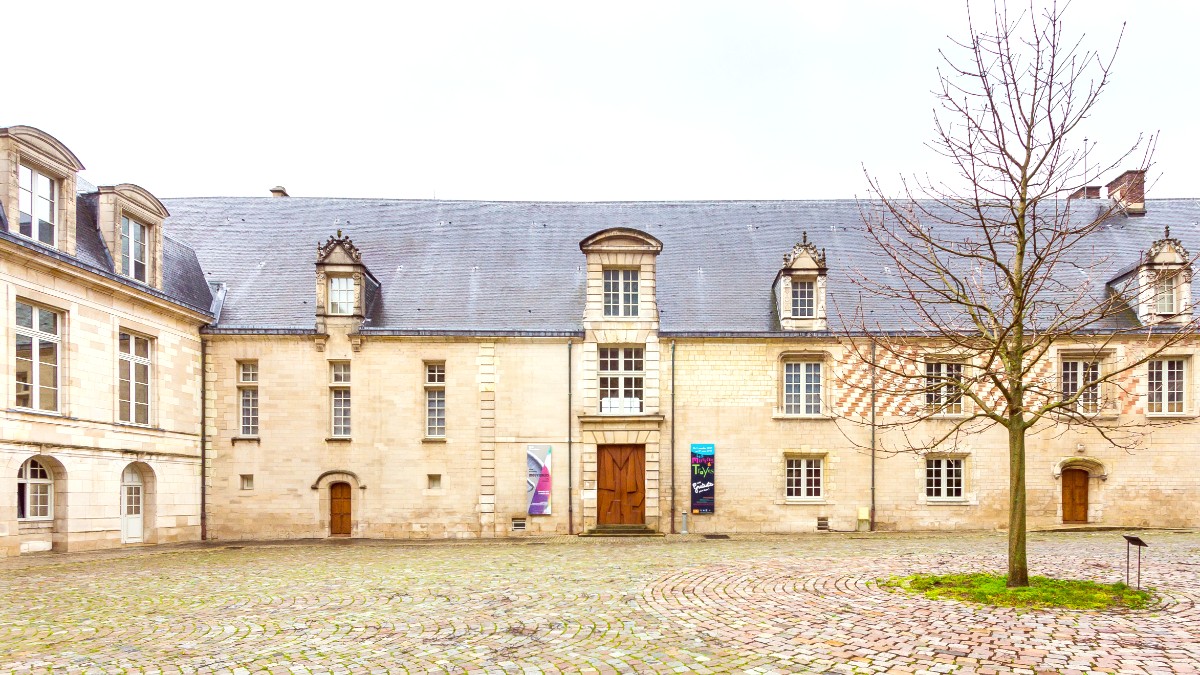
Champagne, France
Troyes invites you to step back in time, savor local flavors, and explore the authentic heart of France's Champagne region. Plan for a visit that blends rich history with modern charm, creating lasting memories.
Troyes boasts a rich medieval heritage, defining its character. During the Middle Ages, Troyes rose to prominence as a major European trade center. It gained renown for the Champagne Fairs, attracting merchants from across Europe.
A major fire in 1524 devastated much of Troyes. However, the rebuilding effort led to the construction of the distinctive old town. This post-fire reconstruction largely used the half-timbered architectural style, resulting in many well-preserved houses from the 16th century. These buildings, with exposed wooden beams and often colorful infill, lend the city its unique charm and its "bouchon de champagne" (champagne cork) shape when viewed from above. The narrow, winding streets create a medieval atmosphere.
Troyes features medieval half-timbered architecture visible throughout its old town. This style, with its distinctive wooden frameworks, offers a visual journey back to the 16th century and earlier. The city’s shape, often compared to a champagne cork, adds to this unique aesthetic.
Troyes functioned as a historical trade hub. Its past as a center for the Champagne Fairs demonstrates its long-standing importance in European commerce. This legacy shapes the city's layout and character.
Troyes sits within the broader Champagne region, specifically representing the Côte des Bar area. This distinction provides a different, often more intimate, experience of Champagne production compared to the grand houses found elsewhere. You will find smaller, family-run vineyards and producers here.
The city holds fame for its stained glass art. Its churches house remarkable collections of stained glass windows, some dating back centuries. A visit to the Cité du Vitrail (City of Stained Glass) offers insights into this craft.
Troyes has a significant textile industry history. While less prominent now, its past as a center for hosiery production shaped its economic and social development. This history is reflected in some of its museums.
Troyes has a modern reputation for factory outlet shopping. Large outlet centers on the city's outskirts attract shoppers seeking deals on various brands, adding a contemporary shopping dimension to its historical allure.
This combination of elements brings something for a variety of interests.
The term "Troy ounce," an unit of measure for precious metals, finds its origin in the city's historical importance as a trading hub, highlighting its past economic power.
Wander through medieval half-timbered houses and narrow, winding alleys that reveal centuries of heritage. The city’s unique "champagne cork" shape (when viewed from above) adds to its charm.
Troyes is known for its many churches with remarkable collections of stained glass art, spanning the 13th to 19th centuries. The Cité du Vitrail (City of Stained Glass) offers insights into this craft.
The combination of trade, reconstruction, artistic mastery, and industry created the Troyes that continues to invite visitors.
Troyes presents a diverse snapshot for any traveler. Its blend of old and new offers something for a variety of interests.
This combination of trade, reconstruction, artistic mastery, and industry created the Troyes that continues to invite visitors.
Discover smaller, family-run vineyards in the Côte des Bar area for an intimate Champagne production experience.
On the city's outskirts, large outlet centers attract shoppers seeking deals on various brands.
Troyes is renowned for its numerous churches, many featuring impressive collections of stained glass art. This artistic tradition spans several centuries, from the 13th to the 19th century.